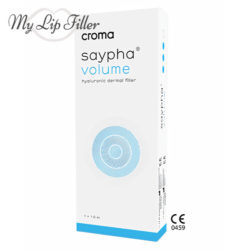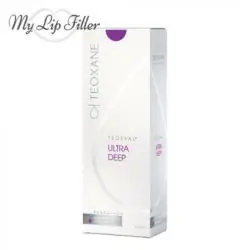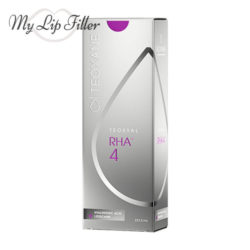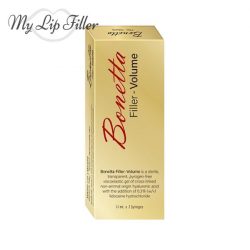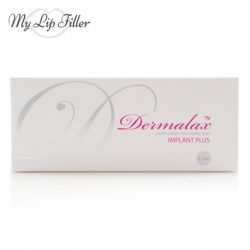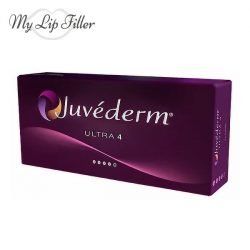One this that is quite particular about dermal fillers is that there are a lot of different types. There is no “one glove fits” all Hyaluronic acid solution. Most premium brands will not only have varying density face filler products but will have specific fine-tuned solutions for various features and purposes – surface wrinkles, lips, contour etc. In that regard, cheek fillers are hardly any different. Perhaps, not a part of the face where a dedicated product is often applied, but still getting plump cheeks requires using the right product in the right area.
Mastering Cheek Augmentation with Precision Fillers
Density is king when it comes to improving or regaining the skin volume in the area of the cheeks. The general problem with using just “any” filler is that the results must be both lasting and appear natural. Soft HA gel is great for filling in small to moderate depressions in the skin, but dermal fillers for cheeks (think Rejeunesse Shape) have to be with higher viscoelasticity, to provide more stability. Low-viscosity fillers are more flowable – a property necessary to fill delicate skin lines and wrinkles. Even medium-thickness fillers which are used for the lips, normally, are unlikely to provide the required density (and thus – stability), so a face filler with higher particle size will be required.
Dense dermal fillers, like Revolax SubQ, are inherently more stable and less flowable. Once the HA gel is applied in the subcutaneous layer of the dermis, it is to remain in place and not be much affected by the movement of the face. In areas like the lips or around the eyes, this could be a problem, as it would predispose them to lump formation. However, in instances where severe skin volume loss is present, like when cheek augmentation is necessary, the ability of the gel to retain that volume is irreplaceable. This is just as true when enhancing the cheekbone features, where the filler must also remain “in place”.
The problem with cheek volume loss
Multiple factors would cause the skin in the cheek area to lose volume and, possibly, sag, but the most common factors that adversely affect this part of the face are:
- Age – the skin naturally deteriorates over time. It loses elasticity and starts to sag, due to the decreased ability to synthesize elastin. Not to mention aging skin becomes dryer. But the worst problem is that as it stops creating collagen, the volume of the skin noticeably decreases, mandating a rejuvenation procedure.
- Weight loss – this can be intended or not (the result of illness or other health problems). Most often, the weight loss is something positive, however, it can cause skin sagging not only on the body but also on the face. The area between the temples, cheekbones, and jaw is especially susceptible to being negatively affected and injectable cheek enhancement is often necessary.
- External factors – even a healthy person might have to deal with the adverse reaction of their skin to pollution, excessive sun exposure (UV light is terrible for the skin), water pollution, and more.
- Lifestyle/diet – what you put inside your body will directly affect the way you look. Sleep less, overwork yourself, and eat bad food, and skin sag and loss of cheek volume are bound to happen (among of plethora of other problems).
A Professional Approach to Cheek Filler Injections
Dense fillers (Glowing Fill Full, Bonetta Filler Volume) are probably the most versatile group of HA gel based solutions for facial rejuvenation, as they can be used in many parts of the face to augment and shape the features, like getting sculpted cheekbones for example. This makes them the perfect, cost effective substitute for traditional plastic surgery, as fillers are much less invasive and require little to no downtime. In the past 15 years more and more dermatologists (and other licensed professionals), have turned to cheek and cheekbones fillers as the better option for facial sculpting and contouring.
Showing 1–12 of 40 results
-

A-Jax D’azur PLA / PDLLA Filler – 200mg
$165.00 Add to cart -

A-Jax Keen Sublime (1 x 1.1ml)
$41.00 Add to cart -
Sale!

Elasty G Plus Double Filler (2 x 1ml)
Original price was: $79.00.$75.05Current price is: $75.05. Add to cart -

Neauvia Intense Flux 1 x 1ml
$89.00 Add to cart -

Nexfill Volume (1 x 1ml)
$44.00 Add to cart -

Saypha Volume (1 x 1ml)
$60.00 Add to cart -
Sale!

Teosyal Puresense Ultra Deep (2 x 1.2ml)
Original price was: $217.00.$206.15Current price is: $206.15. Add to cart -
Sale!

Teosyal RHA 4 (2 x 1ml)
Original price was: $255.00.$242.25Current price is: $242.25. Add to cart -
Sale!

Bonetta Filler Volume – 2 x 1ml
Original price was: $79.00.$75.05Current price is: $75.05. Add to cart -
Sale!

Dermalax Implant Plus (2 x 1.1ml)
Original price was: $105.00.$94.50Current price is: $94.50. Add to cart -
Sale!

Glowing Fill Full (2 x 1ml) – Dual Pack
Original price was: $79.00.$75.05Current price is: $75.05. Add to cart -
Sale!

Juvederm Ultra 4 (2 x 1ml)
Original price was: $228.00.$216.60Current price is: $216.60. Add to cart





